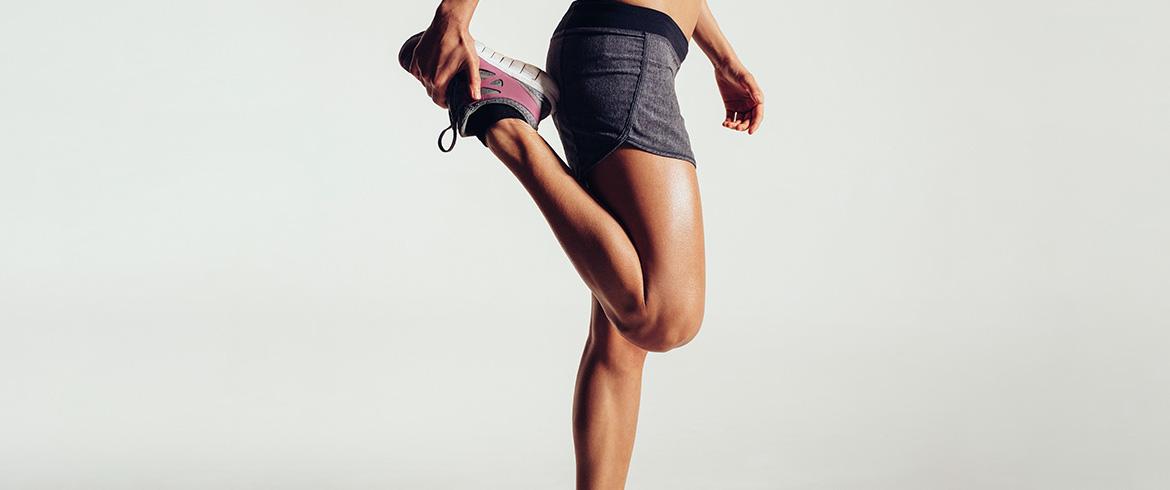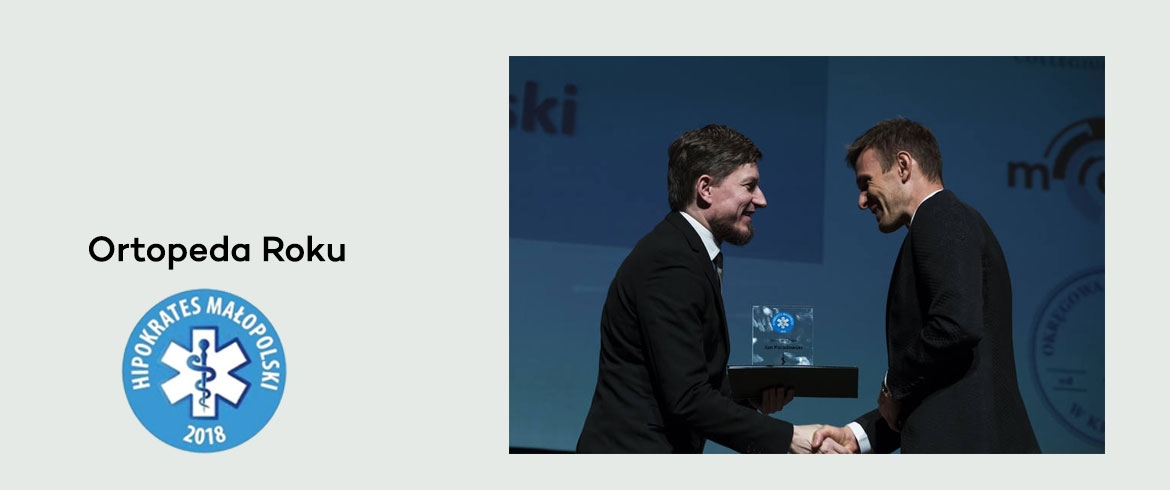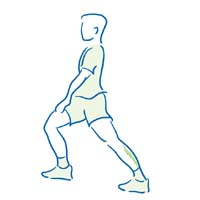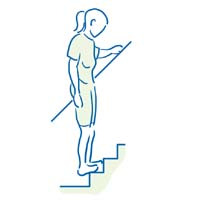During my practice as a sports doctor I often treat patients with pain in the Achilles tendon. A sudden injury of the tendon or chronic tendon stress (tendonopathy or enthesopathy) is a problem which many athletes must deal with. Pain in the Achilles tendon is commonly called infection of the Achilles tendon, and improperly treated with steroid injections (blockers). Most often, however, the condition is due to a degeneration of the collagen fibers that form the tendon, and it involves pain along the rear part of the calf near the heel and just above it. The Achilles tendon is the strongest tendon in the human body. It guarantees the connection of the calf muscle to the heel bone. It is one of the most often used tendons and it is used while we are walking, running and jumping. Because of the enormous stress on the Achilles tendon, it is subject to damage from a cumulation of microinjuries. Microinjuries cause degeneration to the collagen fiber that forms the tendon, which leads to a weakening of its structure. At the start the process of fiber destruction may take place without symptoms and this may lead to tearing of the tendon.
► Read about Platelet Rich Plasma (PRP = GPS), which I use to treat damaged tendons - click here.
A damaged Achilles tendon is most often caused by chronic micro injuries while running and jumping. It is most common among tennis players, runners and recreational football players between 35 and 45 years of age.
Contents:
- Symptoms of injury
- First Aid
- How to ensuring optimal recovery?
- Preventing damage to the Achilles Tendon
Symptoms:
Symptoms of injury are, among others, gradually increasing pain in the heel area and above (5-7 cm above the heel). At the start the pain may occur only in the night and during training. In later stages, the pain may be present continuously during exercise and even during rest. Continuing exercise in this state may cause a deepening of the contusion, which makes a return to full fitness significantly more difficult.
The most common symptoms of injury to the Achilles heel are:
- Pain and stiffness along the tendon, particularly in the morning
- Pain along the tendon or in the back of the heel, increasing while walking or running
- Sharp pain the day after training
- Plantar fasciitis (in the area of the heel bone – visible on an X-ray and USG exam)
- Swelling in the area of the Achilles tendon, which may be continuous or increase with the onset of exercise
If you have experienced a sudden "pop" in the back of the calf or heel, that could mean a ruptured Achilles. In this situation you should consult with your doctor in order to diagnose and treat it. The tear may be partial or complete. Both situations require setting an appropriate, individualized program of treatment – operational or conservative.
First aid:
- Limit physical activity (particularly tennis, running and jumping). As a doctor, I always try to make the break in sports activity or training as short as possible.
- For a severe condition (pain and swelling) a good solution is ice compresses, which allow for symptoms to be alleviated. Ice compresses or ice with massage should be applied several times a day for 5-8 minutes.
- Professional rehabilitation is necessary, especially sport massage, stretching exercises (and then eccentric and stabilizing exercises). I set the rehabilitation program for each patient individually during the doctor visit.
- Remember to properly choose your footwear.
- Use special shoe inserts or an Achilles tendon bandage, which guarantee good shock absorption and stress reduction.
- You should stop running and instead go bike riding and swimming.
- For a ruptured Achilles tendon in athletes, the recommended treatment is the surgical repair of the tendon.
How to ensuring optimal recovery:
In most cases nonoperative treatment of the Achilles tendon guarantees pain relief, but it may take several months for the symptoms to completely disappear. In order to return activity quicker and better regenerate the tendon, it is recommended to inject the Achilles tendon with Platelet Rich Plasma (PRP) according to a special procedure. Rehabilitation is used –conducted simultaneously by a physiotherapist and the patient, who performs a set of exercises on their own at home. The exercises may be begun immediately as soon as the greatest pain and swelling disappears. During exercises it must be remembered that sharp pain is the first signal in reducing the training load. Don’t overdo it! It is important not to cross the barrier to acute pain, because this may counteract the therapy. The Achilles tendon reconstruction program should take place in three stages as described below, together with practical advice.
The exercises below help to strengthen the calf muscles and reduce cramping of the Achilles tendon. 
-Stretching the long calf muscles:
Take a step forward with the healthy leg, bending the knee. Keep the second leg straight with the heel on the ground. The knee of the leg with the damaged tendon should be kept straight.
While remaining in the position described above, shift the weight from the back to the front leg and press the heel of the back leg strongly to the ground. Place your hands on the wall, for example. The tension should be noticeable high in the calf. Keep this position for 15-20 seconds, wait 20 seconds and repeat three more times.
-Stretching the short calf muscles:
Begin from the same position as above. With your hands on the wall, bend the knee of the back leg, all the while keeping the heel on the floor. The stretching should be felt lower in the calf. Maintain this position for 15-20 seconds, rest for 20 seconds and repeat the whole exercise three times. 
-Stretching the foot muscles:
Sit on a chair. Move the foot with the injured Achilles tendon in the air, trying to ‘write’ the letters of the alphabet. Fold a towel by grasping it with the toes of your foot. Do this exercise for 15-20 seconds, and after several seconds of rest repeat 10-20 more times.
-Strengthening the calf muscles:
Stand on the edge of the stairs or a stable bench. This position will let you move up and down without hitting the stairs with your heel. Be careful to maintain your balance, by holding on to a bannister, for example. Raise the heel and then slowly lower it to the lowest possible point. Repeat this exercise 20 times. The exercise should be done slowly in a controlled pace. A sudden movement may risk injuring the tendon.
It is best to place even lead on both feet while going upstairs, and lean on the injured leg only when going downstairs. It’s best to do this exercise twice daily for 5 minutes. It should be done with both extended and slightly bent knees. You should continue the exercise even if you can feel the pain. It may be stopped only when the pain is too strong and sharp in nature. In order to increase the load in the exercise, put on a heavy backpack (with the complete works of your favorite author, for exampleJ).
- In order to maintain general physical fitness, you should cycle or swim daily for a minimum of 15-30 minutes.
Stage 2: Build-up
Once the exercises in stage one do not cause any difficulty, you can begin training to prepare you to return to the sport that you perform professionally:
- Take small, quick steps on the spot, alternating from the right to the left foot.
- If the first exercise does not cause pain, begin jogging on the spot. Take small steps, standing on the entire foot. These exercises allow you to appropriately prepare the muscles to return to running or other sport.
- Next, add sprint-type exercises, for example: running, stopping and turning.
Stage 3: Return to play
After this preparation, return to play on the court may be possible. Begin playing by bouncing the ball off a wall and gradually increase the distance. Try to position yourself well to receive the balls, taking small steps. In the next two weeks, it may be possible to add exercises that require completing greater distances to receive the ball (from side to side).
Then you can add a low volley and overheads to the trainings.
It is recommended that players return to playing short games for points, with serve, and then full practice matches.
Preventing damage to the Achilles tendon:
It is not always possible to avoid a repeat injury to the Achilles tendon, but it is possible to reduce the risk by paying attention to the following:
- Perform a complete warm-up before play. After finishing the training try to rest and cool down for about 10 minutes. Remember to do stretching exercises including the Achilles tendon on the warmed-up muscles after warm-up and always after finishing the training.
- Improper footwear is often a cause of injury. It is crucial to maintain stability around the ankle. Make certain that the shoes lie well around the ankle and that the shoe at the base of the heel is wide enough. The soles of the shoes should be flexible, with the flex point under the ball of the foot, not in the middle of the foot. Remember to walk in the new shoes before your first match with them. Do not put on new shoes before an important match.
- After a difficult match or training, massage can help to loosen the muscles of the calf and reduce tension in the Achilles tendon. In addition, it will increase the flow of blood to tissues, thanks to which it reduces muscle cramping and recovery will be optimal. Sports massage is difficult and should be performed by the sports physiotherapists with whom I work.
- The frequency and duration of a match should not be increased too quickly after such an injury. In the case of a change in circumstances, such as new shoes or court surface (especially the transition from clay to hard court), the body must have enough time to adapt to the changes.
- During the convalescence period after an ankle contusion, the sprain of an ankle joint, problems with the Achilles tendon can also arise. It may be caused by fluid gathering around the Achilles tendon (in various localizations, which we can observe in a sonographic exam, especially in a dynamic sonography of the tendon) and an increase of the instability of the ankle joint, which increases the strain on the Achilles tendon. These symptoms may be minimalized by temporary use of the ankle joint orthosis.
Summing up, the procedurę for pain in the Achilles tendon is multidirectional and requires:
- quick diagnosis by a sports doctor with a sonographic exam including a dynamic sonography,
- therapy involving the precise injection of the Achilles tendon with Platelet Rich Plasma growth factors from the patient’s own blood. I conduct these procedures according to a special protocol for the Achilles tendon,
- early rehabilitation with a sports physiotherapist in keeping with the guidelines of a sports doctor,
- exercises conducted first under the supervision of a physiotherapist and later by the patient themselves (after training)
- doctor’s checkups with sonographic exam to observe regeneration of the tendon and determine when and at what level to return to professional sports.






